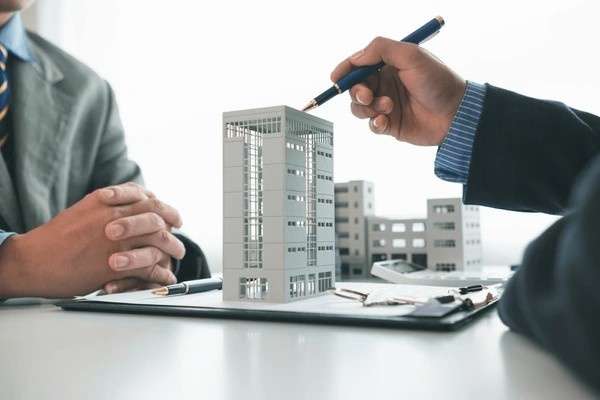When it comes to home improvement, one of the most common questions I get asked is whether hardwood floors are a good investment. Hardwood flooring has been a staple of quality interiors for centuries, often associated with elegance, durability, and timeless appeal. But is it truly a wise financial investment, or is it just a cosmetic upgrade that may not pay off in the long run?
In this article, I will take you through a detailed analysis of hardwood floors as an investment. I will cover various angles, including the cost, long-term value, maintenance, and the impact on property resale. I’ll also compare hardwood floors with other popular flooring options to help you make an informed decision.
Table of Contents
1. The Cost of Hardwood Flooring
Before diving into whether hardwood floors are a good investment, let’s first break down the cost involved in installing them. Generally, the cost of hardwood flooring can range widely, depending on the type of wood, installation method, and region. Here’s a breakdown of the costs:
| Type of Hardwood | Cost per Square Foot | Installation Cost | Total Cost |
|---|---|---|---|
| Oak | $3 – $8 | $2 – $5 | $5 – $13 |
| Maple | $4 – $9 | $2 – $5 | $6 – $14 |
| Cherry | $5 – $10 | $2 – $5 | $7 – $15 |
| Hickory | $5 – $12 | $2 – $5 | $7 – $17 |
Keep in mind that the total cost of hardwood floors will also depend on the size of your home and whether you need to remove old flooring. For example, a 1,000 square-foot space could cost anywhere from $5,000 to $17,000 to install hardwood floors, including both material and labor costs.
2. The Lifespan of Hardwood Floors
One of the key selling points of hardwood floors is their durability. If maintained properly, hardwood floors can last a lifetime. Unlike carpet or laminate, which can wear out and require replacement every 10 to 20 years, hardwood floors can last for decades, even centuries. Over time, you can refinish and sand down hardwood floors to restore their original shine and smoothness. This significantly extends their lifespan.
For comparison, let’s look at the lifespan of various flooring options:
| Flooring Type | Average Lifespan | Refinishing/Replacement |
|---|---|---|
| Hardwood | 50+ years | Can be refinished 3-5 times |
| Carpet | 5-15 years | Replacement required |
| Laminate | 15-25 years | Replacement required |
| Tile (Porcelain) | 25-50 years | Rarely requires replacement |
This longevity makes hardwood a sound investment. Although the initial cost is higher than other flooring options, you are likely to see a return on investment (ROI) due to the durability.
3. Maintenance and Upkeep Costs
Another aspect of hardwood flooring that affects its investment potential is the ongoing maintenance and upkeep. While hardwood floors require more attention than laminate or tile floors, they are relatively easy to maintain with proper care. Routine cleaning involves sweeping or vacuuming to remove dirt and debris. Spills should be cleaned promptly to avoid staining.
If your floors get scratched, scuffed, or damaged over time, you can have them refinished. Refinishing costs typically range from $2 to $5 per square foot, depending on the size of the area. In general, hardwood floors can be refinished every 7 to 10 years, depending on wear and tear.
For comparison, let’s see how the maintenance costs of hardwood floors stack up against other types of flooring:
| Flooring Type | Initial Cost | Maintenance Cost | Frequency of Replacement/Refinishing |
|---|---|---|---|
| Hardwood | High | Moderate ($2-$5/sq ft for refinishing) | Every 7-10 years |
| Carpet | Moderate | High (cleaning, stain removal) | Every 5-10 years |
| Laminate | Moderate | Low (cleaning, occasional repairs) | 10-20 years |
| Tile | High | Low (cleaning, grout maintenance) | Every 25-50 years |
As you can see, hardwood floors come with moderate maintenance costs, but they require less frequent refinishing than carpet replacement or laminate repairs.
4. Hardwood Floors and Property Value
Perhaps the most important aspect of hardwood floors as an investment is their impact on the value of your home. When it comes time to sell, the type of flooring you have can play a role in determining your home’s resale value. Hardwood floors are often seen as a luxury feature and can help make your home more attractive to potential buyers.
According to a study by the National Wood Flooring Association, homes with hardwood floors tend to sell faster and at higher prices compared to those with other types of flooring. In fact, hardwood floors can increase a home’s value by approximately 2.5% to 5%. The actual return on investment (ROI) can vary depending on the market and your home’s location, but generally speaking, hardwood floors tend to offer a positive ROI.
Let’s say you have a home valued at $300,000. With hardwood floors, you could potentially increase its value by $7,500 to $15,000. In comparison, homes with carpet or laminate flooring typically don’t see as significant of an increase.
| Flooring Type | Increase in Home Value |
|---|---|
| Hardwood | 2.5% – 5% of home value |
| Carpet | 0% – 1% of home value |
| Laminate | 0% – 1% of home value |
| Tile | 2% – 3% of home value |
5. Environmental Impact of Hardwood Floors
As environmental concerns grow, many homeowners are choosing sustainable options for their home renovations. Hardwood floors are often considered an eco-friendly option, especially when sourced from responsibly managed forests. FSC (Forest Stewardship Council) certified hardwoods are harvested in ways that minimize environmental impact.
In comparison to synthetic flooring options like laminate, hardwood is biodegradable and can be recycled at the end of its life. Additionally, the production of laminate flooring involves chemicals and plastics that can be harmful to the environment. While hardwood flooring can be more expensive in the short term, it can be considered a more sustainable and environmentally friendly choice in the long run.
6. The Aesthetic Appeal of Hardwood Floors
Aesthetically, hardwood floors bring warmth, beauty, and elegance to any space. The natural grains and rich colors of hardwood can suit a variety of interior styles, from modern to traditional. Many buyers prefer homes with hardwood flooring because it creates an inviting atmosphere.
Unlike carpets, which can look worn and dated over time, hardwood floors retain their beauty. Even after years of use, they tend to look better with age, especially if they’ve been refinished properly.
Here’s a quick visual comparison of the aesthetics:
| Flooring Type | Aesthetic Appeal | Longevity of Look |
|---|---|---|
| Hardwood | Warm, elegant, timeless | Ages well with refinishing |
| Carpet | Cozy, soft | Wears out and looks dated |
| Laminate | Versatile, modern | Can lose luster over time |
| Tile | Sleek, clean | Maintains appearance for decades |
7. Is Hardwood Flooring Worth It?
The decision to install hardwood floors ultimately depends on several factors: your budget, the size of your home, how long you plan to stay, and the local real estate market. If you’re looking for long-term durability, aesthetic appeal, and an investment that can increase the value of your home, hardwood floors are a wise choice.
However, if you’re working with a tight budget or don’t plan to stay in the home for long, you may want to consider other flooring options. For instance, laminate or tile may be more affordable initially, and you might be able to get a similar aesthetic without the same long-term investment.
Conclusion
In conclusion, hardwood floors are, without a doubt, a good investment for many homeowners. While they come with a higher upfront cost, their durability, aesthetic appeal, and potential to increase your home’s value make them a wise financial decision in the long run. With proper care, hardwood floors can last for generations, providing both functional and financial benefits. If you’re willing to invest in quality, hardwood floors will likely reward you with a strong return on investment and years of enjoyment.





